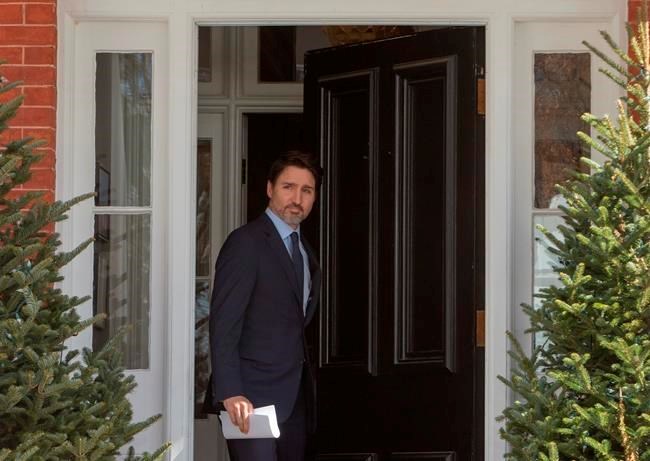OTTAWA — The federal government is retooling messaging for travellers arriving in Canada amid criticism that it's not doing enough to ensure thousands of people entering the country don't drive a national spike in COVID-19 cases.
But even as border officials are updating signs and pamphlets in order to ensure everyone coming in goes into self-isolation, Prime Minister Justin Trudeau said Sunday the question of whether to close the border overall remains up for discussion.
Hundreds of Canadians are on their way back to Canada as the novel coronavirus continues its global march, its epicentre now in Europe where borders are closing, flights are being cancelled and entire towns are being ordered into seclusion to control the spread of the illness.
On Saturday, the federal government had urged travelling Canadians to return home while they still had the chance, but the Liberal government continues to face pressure to close Canada off as well from the outside world.
Trudeau said Sunday that what decisions his cabinet will make will be guided by science.
And Canada's top public health official said what the science shows at the moment is that closing borders didn't work for other countries, and what's more important is how the society works together.
That's why all travellers are being asked to self-isolate, as they can't be forced to do it, Dr. Theresa Tam said at a news conference in Ottawa.
"It is impossible to be essentially keeping tabs on every single traveller that comes in," she said.
"This is a social phenomenon, this is a societal response and everybody must take that responsibility. Public health is going to do what it can."
On Sunday, authorities were updating signage and information at airports in the wake of many travellers reporting that as they re-entered Canada from abroad, they were being given no details about what to do — unless they were arriving from the three historic hotspots for the illness: China, Iran and Italy.
Tam said the epicentre of the outbreak has now shifted to Europe as a whole, and as the situation continues to change, so too will the information travellers receive.
While Tam said all Canadians need to be taking what measures they can to curb the spread of the illness, she did not suggest the border close.
"We have to maintain essential movement of people and services as well," she said.
Canada now has more than 320 cases of COVID-19, with all 10 provinces reporting infections though most, so far, are directly linked to travel. There has been one death, and a number of the early cases are now considered recovered.
Trudeau acknowledged Sunday that things are changing fast, and nothing is off the table — including shutting the border and making isolation and screening at the border mandatory.
"We are hearing the concerns people have had," he told CTV's Question Period in an interview outside his home, where he and his family remain in self-isolation following his wife's diagnosis with the illness.
"The shift in posture from the United States of course gives us significant things to think about and we will be discussing it later today among other measures at our cabinet meeting."
This week, U.S. President Donald Trump closed his country to travel from Europe.
The Opposition Conservatives have been calling for Trudeau to shut down the borders, and reiterated that call Sunday.
Asking people to act isn't good enough, said the party's critics on health and public safety in a statement.
"It's not enough for the government to simply announce a policy, they must ensure it is being enforced and that front-line staff have the necessary resources and supports," Matt Jeneroux and Pierre Paul-Hus said.
Trudeau's wife Sophie was diagnosed with COVID-19 following a trip to the United Kingdom. He said she continues to recover and currently has a headache but it is not worse than a bad cold.
While other world leaders, including Trump, have been tested as a result of being in close contact with those who have the virus, Trudeau said the advice he has received is that the test would be wasted on him as he continues to show no symptoms.
This report by The Canadian Press was first published March 15, 2020.
Stephanie Levitz, The Canadian Press



